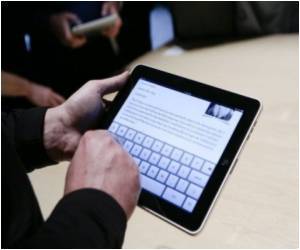Learning joined-up letters is a no-brainer for third grade kids at Elementary Schools in Ellicott City

"It's like, you don't need to do normal letters anymore," agreed classmate Sophia Spence. "You can do fancy letters, instead of just normal letters."
But outside the classroom, grown-up Americans are debating whether the nation's children should be studying cursive at all, in an era of swift and profound technological change.
Common Core, the kindergarten-to-high school standard curriculum shared by 45 of the 50 states (the outliers include Texas and Alaska), is silent on the subject of cursive, also known as longhand or joined-up writing.
It merely calls for the teaching of block-letter handwriting, as well as "keyboarding" -- the skill formerly known as typing that many contend is far more relevant today than scrawling across a sheet of paper.
"In the United States, relatively few people use cursive," said Morgan Polikoff, an assistant professor of education policy at the University of Southern California, who sees "no compelling reason" for cursive instruction to remain on the curriculum.
Advertisement
"Everyone is typing, everyone is texting, so cursive is kind of thought of as a lost art," added Bernadette Lucas, principal of Melrose Avenue Elementary School in Los Angeles, where the school board is spending $30 million (22 million euros) to provide Apple iPads for its students.
Advertisement
"This shouldn't be happening here and now. We're still using it in everyday things," said North Carolina legislator Pat Hurley, main sponsor of a "back to basics" education law that mandates cursive instruction in the southern state.
Hurley felt prompted to act -- "Democrats, Republicans, they all agreed," she said -- after she led a fourth-grade class from her district on a tour through the state house in Raleigh.
"Their teacher had them each write a thank-you letter on lined paper," she told AFP. "Well, the teacher's thank-you note was in cursive; the children's notes were all printed. That's when I first realized I didn't think they were being taught."
'As your pen flows, so does your thinking'
Research by Laura Dinehart of Florida International University's college of education in Miami indicates that four-year-olds with strong handwriting skills of any kind are more likely to excel in math and reading when they get to elementary school.
In Canada, a survey of 718 students and teachers in second-grade classrooms in the mainly French-speaking province of Quebec suggested that pupils who learn cursive do better in spelling and syntax thanks to better graphic-motor skills.
"A lot of people feel an emotional connection to cursive," Dinehart told AFP in a telephone interview. "There is thinking that, as your pen flows on paper, so does your thinking."
"Until the 1930s, we taught only cursive. That's the way the country went," added Kathleen Wright of educational publisher Zaner-Bloser, which specializes in language and writing study materials.
Back then, she said, learning to write in block letters was a way to help youngsters comprehend the printed word. Typewriting was a specialized skill for adults; computers were beyond imagination.
Today, despite the intensity of the debate over cursive, Dinehart lamented a lack of thorough research into the long-term value of teaching young Americans to write and read in longhand.
"We really don't know enough about cursive to know whether it really is of value or not," said Dinehart, whose own three young children learn the technique in their bilingual Portuguese-English school in Miami.
"I think what's unfortunate is that we're dropping cursive -- and we don't know what the effects of that will be until it's not there anymore."
In Maryland, the Howard County Public School System, which includes Triadelphia Ridge Elementary School, folds 30 minutes of cursive a week into its Common Core curriculum in the third grade.
"That's about as much the kids can absorb at a time," said teacher Kathleen Russell, who noted how crowded the school schedule has become.
From next year, cursive instruction will begin in grade two in Howard County, with the goal of pupils being able to write "neatly and legibly when handwriting is preferable or technology is unavailable" by the fifth grade, in the words of the school system's handwriting resource guide.
"As far as the students are concerned, they are excited about cursive," said teacher Christian Buzzerd before returning to his open-plan classroom where his pupils happily put yellow pencil to lined paper and ignore the bulbous Apple eMac computer in the corner.
"It's one of the things they consider as another threshold they cross going towards middle school."
Source-AFP








